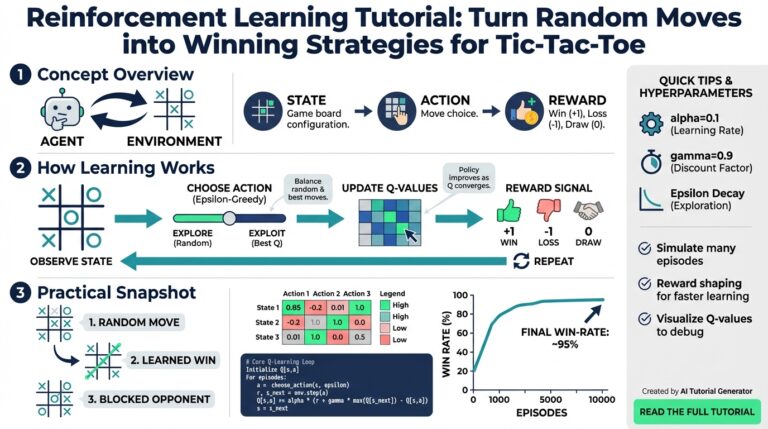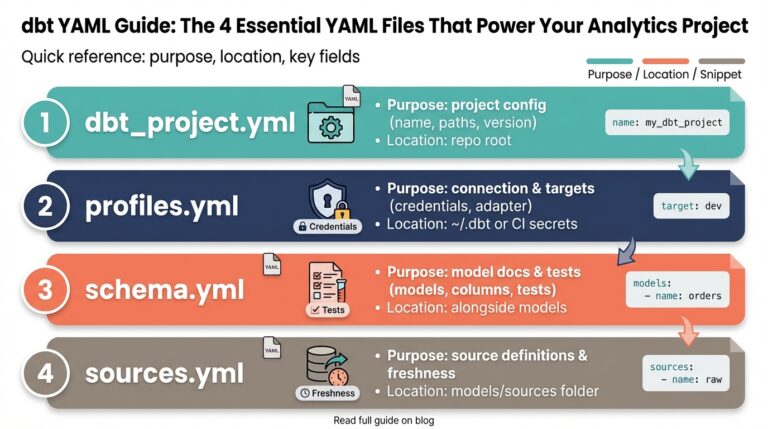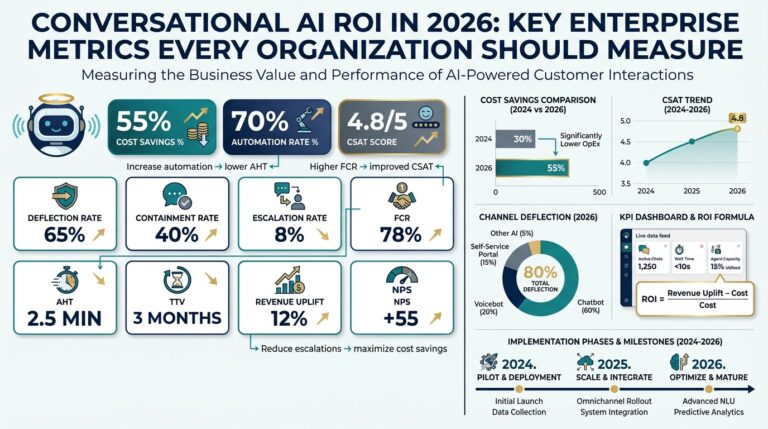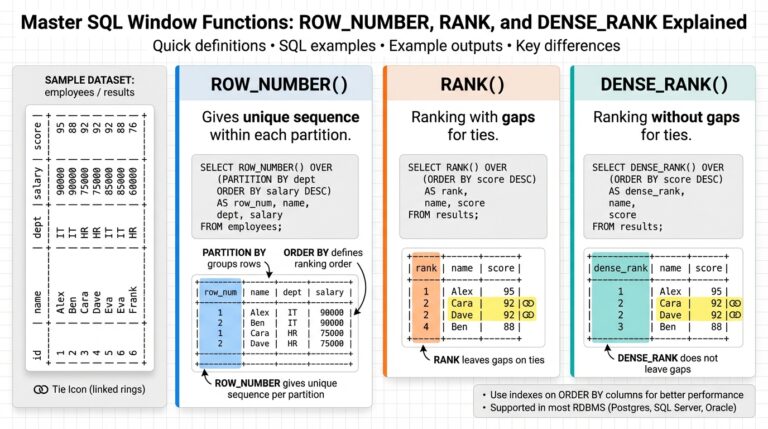The Real-World Challenges Voice AI Agents Face in Production
Deploying a voice AI agent in a laboratory environment is vastly different from maintaining its performance in real-world, production settings. The shift from controlled tests to live use introduces unique and unpredictable challenges that often expose the limitations of many solutions. Below are some of the most critical hurdles voice AI agents must overcome in production, along with real examples and expert-backed strategies.
1. Diverse Acoustic Environments
Unlike training scenarios, production environments are acoustically chaotic. Agents must handle background noise, overlapping voices, echo, and even rapidly changing sound profiles — such as moving from a quiet office to a busy street or factory floor.
- Step 1: Invest in robust noise-cancellation and speech enhancement models. Research from MIT highlights the importance of context-aware audio processing for handling unpredictable sound environments.
- Step 2: Continuously update datasets with real-world samples. In practice, this means regularly injecting live user recordings (collected ethically and with consent) to retrain and fine-tune your models.
- Example: Google Assistant’s performance improvements in noisy places are attributed to ongoing acoustic model updates, as detailed in this Google AI blog post.
2. Accent, Dialect, and Language Variations
Production voice agents must adapt to a wide range of accents and speech patterns. What works in one market may fail dramatically in another. Misunderstandings caused by regional accents can lead to user frustration and reduced trust.
- Step 1: Incorporate accented speech and diverse linguistic patterns into training data. For guidance, see this study from KTH Royal Institute of Technology on multi-accent adaptation.
- Step 2: Deploy adaptive learning mechanisms that allow agents to learn and adjust to individual user speech over time, rather than relying solely on static models.
- Example: Amazon Alexa’s region-specific optimization demonstrates the necessity of locale-based tuning, as outlined in Wired’s coverage of Alexa’s accent engineering.
3. Integration Issues with Backend Systems
Voice AI agents rarely operate in isolation. In production, they must interact seamlessly with CRMs, databases, scheduling tools, or other legacy infrastructure. Fragile integrations lead to broken user experiences and unhandled requests.
- Step 1: Design agents with modular, API-driven architectures. This improves resiliency and makes it easier to adapt as backend systems change. For best practices, refer to Martin Fowler’s guidance on microservices.
- Step 2: Conduct comprehensive integration testing using real workflows—not just ideal scenarios—to catch edge cases early.
- Example: Voice assistants deployed in healthcare settings have failed when EMR (Electronic Medical Record) APIs change, making the ability to gracefully handle downtime or retries critical, as discussed in this ONC HealthIT analysis.
4. Handling Ambiguity and Context Over Time
Production use cases often involve multi-turn conversations, ambiguous statements, or contextual clues scattered across time. Many voice agents struggle to maintain context or resolve ambiguity effectively, especially when conversations are interrupted or re-directed.
- Step 1: Implement sophisticated dialogue management systems that track context over multiple turns. Academic research from Stanford AI Lab dives into context retention challenges.
- Step 2: Build fallback strategies, such as asking clarifying questions, to gracefully navigate uncertain scenarios instead of providing incorrect answers or terminating the conversation.
- Example: Customer service bots in telecom often lose track of context mid-conversation, highlighting the need for persistent context memory stores.
5. Security and Privacy Concerns
Real-world deployment puts voice data at risk of interception or misuse, leading to rising concerns about privacy and data protection. Failing to address these issues can erode user trust and invite regulatory scrutiny.
- Step 1: Implement end-to-end encryption and anonymization techniques for all user data. NIST privacy engineering principles provide a strong framework for architecting secure voice solutions.
- Step 2: Make privacy controls transparent and user-friendly, giving users the ability to manage their data and opt out of retention where possible.
- Example: The backlash over voice data leaks at several major platforms demonstrates the risks of inadequate privacy protocols, as summarized by The New York Times.
In summary, the transition of voice AI agents to real-world environments reveals a multiplicity of challenges. By understanding and proactively engineering for these realities, organizations can create agents that not only survive but thrive in production — ultimately delivering on the promise of voice-first experiences.
Common Technical Pitfalls That Sabotage Voice AI Performance
One of the most significant reasons voice AI agents stumble in production is a collection of technical missteps that undermine both their capabilities and reliability. Whether you’re building your first voicebot or heading a team at scale, understanding these culprits is crucial to long-term success. Below, we’ll unearth the most prevalent technical pitfalls and how they derail performance, drawing on industry research and real-world case studies.
1. Inadequate Handling of Noisy Environments
Real-world deployments rarely happen in pristine, quiet spaces. Many voice AI agents are trained and tested in controlled acoustic conditions, but most users interact with them amidst background noise—think of busy streets, cafes, or even homes with TV playing in the background. If not rigorously trained with diverse and noisy audio samples, voicebots suffer reduced accuracy and frequent misunderstandings. To tackle this:
- Augment datasets with varied real-life audio samples. Crowdsourcing or synthetic augmentation of noise helps systems learn to filter distractions. Leading research shows that multi-condition training improves robustness (source).
- Incorporate adaptive noise cancellation and beamforming—technologies now found in smarter smart speakers and advanced enterprise communication tools (DeepMind).
2. Subpar Automatic Speech Recognition (ASR) Models
The heart of any voice AI is its ASR engine. Relying on generic, out-of-the-box ASR often leads to trouble, especially for specialized vocabularies, accents, or industry terms. Common issues include:
- Ineffective customization: Failing to tailor ASR to your domain—like medical, legal, or customer service—leads to frequent misrecognition. Custom language models, built from corpora specific to your business, can significantly elevate recognition accuracy (Google AI Blog).
- Neglecting accents and dialects: Many non-native speakers or regional accents go underrepresented. Integrating community voice samples and leveraging dialect-specific data can bridge this gap.
3. Brittle Natural Language Understanding (NLU) Pipelines
Too often, voice agents rely on hard-coded phrase matching or insufficiently trained NLU models. This makes the system fragile when users deviate from expected phrasing or try expressing themselves naturally. Some common missteps include:
- Narrow intent catalogs: Overly limited lists of what users can say lead to frequent fallback errors. Investing in deep NLU training and continual expansion of intents helps agents better generalize.
- Skipping ongoing retraining: Analytics from live user queries should drive regular NLU updating so agents adapt to user behavior and emerging trends.
4. Latency and Scalability Problems
Nothing frustrates users like laggy or unresponsive voice interactions. High latency often stems from underpowered infrastructure or poor pipeline optimization. The result? Users abandon the voice agent mid-conversation. Combat this by:
- Optimizing backend services: Adopt event-driven architectures, compress model sizes, and make judicious use of GPU acceleration (AWS Machine Learning Blog).
- Load testing under production-like conditions: Simulate real-world traffic spikes and user concurrency early in development to identify and resolve bottlenecks.
5. Overlooking Robust Error Handling and Fallback Mechanisms
Every AI—no matter how powerful—will eventually fail to understand a user. The bigger problem is a system that doesn’t handle these moments gracefully. Common downfalls:
- Inaccessible escalation paths: Users should easily reach a human agent or retry their query without dead ends. Best-in-class systems provide multi-step fallback logic and smooth handoffs (Gartner).
- Lack of conversational retries: Instead of dropping the conversation after a single misfire, effective voicebots ask clarifying questions or offer suggestions, keeping users engaged.
Addressing these technical pitfalls requires a holistic, iterative approach. By anticipating them—and proactively engineering around them—you’ll be far more likely to launch voice AI agents that succeed and delight users at scale, rather than frustrating or confusing them.
Why User Expectations Often Outpace Current Voice AI Capabilities
Modern users expect their voice assistants to understand natural language, context, accents, emotions, and even ambiguous commands as seamlessly as a human would. This expectation is shaped by years of managing complex tasks verbally with other humans, and by the rapid progress of technology in adjacent fields, like image recognition and predictive text. But in reality, current Voice AI capabilities often lag far behind, leading to underwhelming user experiences and failed business deployments.
Human-Level Understanding Remains Elusive
People want voice AI agents to interpret their words in the context of previous interactions and shared knowledge, much like two friends catching up over coffee. However, while recent advances in natural language processing have closed some of this gap, AI still struggles with true language understanding. For example, when told to “set an alarm for tomorrow,” a voice agent must not only comprehend the request but also know the user’s time zone, how “tomorrow” is defined (e.g., after midnight), and more. Any ambiguity can trip up the system.
Accent, Dialect, and Multilingual Limitations
Voice AIs are primarily trained on accent-neutral, standard language corpora. When interacting with speakers who use regional dialects, slang, or have strong accents, recognition accuracy plummets. A Harvard Business Review article highlights persistent bias and performance issues affecting non-native speakers and minorities. For companies building global products, this mismatch between user diversity and training data results in daily frustration for many users.
Failings in Context Awareness and Memory
Users expect voice agents to remember context—like past bookings, family member names, preferred brands, or ongoing tasks—so that conversations can build over time. Most production-ready systems, though, are still limited to isolated commands or short-term memory. Users might say, “Book a table at the same place as last Saturday,” but if the agent lacks contextual storage and retrieval, it simply can’t deliver. This challenge is discussed further in Forbes’ exploration of context in AI.
Ambiguity and Emotional Intelligence
Voice interactions aren’t always clear or emotionally neutral. For example, a user might utter, “That’s just great,” with sarcasm. Human listeners can infer sentiment using tone and context, but most voice AIs fail spectacularly in such cases. Solutions are in development, such as emotional intelligence models covered by Stanford’s AI group, but they are far from deployment at scale.
Expectations Set by Futuristic Marketing
Big tech companies often market voice AI capabilities with polished demos that mask these real-world limitations. Customers then expect smooth, multi-turn conversations and deep understanding, only to discover hidden caveats when they use the product extensively. This gap between expectation and delivery is a common cause of attrition and failed rollouts, as organizations highlighted in Gartner’s research on voice dialogue limitations.
Steps for Designers and Developers
- Conduct expectation mapping: Gather user expectations and pain points at every touchpoint. Regular user testing with diverse populations can reveal hidden disconnects.
- Be clear about capabilities: Set realistic user expectations through transparent onboarding and in-product messaging.
- Invest in continuous improvement: Use feedback recordings and retrain language models with customer-specific data—especially from underrepresented groups—for better accuracy.
- Prioritize memory and context: Build or integrate dialogue management systems that track context across sessions, as recommended by leading AI researchers.
User expectations will continue to evolve as AI advances, but building trust requires blunt acknowledgment of current limitations and an ongoing commitment to improvement. By keeping expectations realistic—and delivering incremental improvements—developers can begin to bridge the gap between what users want and what technology can truly do today.
The Importance of Robust Data and Continuous Learning
The leading reason why many voice AI agents struggle to perform successfully in production environments lies in the quality and scope of the data they are trained on, as well as their ability to continuously learn from real-world interactions. When these foundations are weak, even the most technically impressive AI models can fail to meet user expectations or handle the complexities of natural language in diverse settings.
Why Robust Data Matters in Voice AI Development
Voice AI systems thrive on high-quality, diverse datasets. If the training data is limited—such as being too narrow in accents, languages, or conversational topics—the agent may perform well during controlled testing but stumble when facing real users. For example, a voice AI trained predominantly on American English may misinterpret users with regional or international accents, leading to frustrating customer experiences. There are several critical attributes of robust data for voice AI:
- Diversity: Data should represent a wide range of accents, dialects, ages, and background noises. According to a study published in Nature, systems trained on homogenous datasets are more prone to bias and lower accuracy in real-world application.
- Volume: The more examples the AI is exposed to, the better it can generalize. Voice agents need thousands of hours of annotated speech encompassing typical and edge-case scenarios.
- Quality: Human-annotated datasets, verified for correct transcription and intent labeling, help models learn semantics and context. Low-quality labels can propagate misunderstandings and errors throughout the system. Learn more about the importance of data quality from this Google AI blog post.
Continuous Learning: The Key to Long-Term Success
Unlike static traditional software, voice AI agents must adapt to the evolving ways people speak and interact. New slang, idioms, and user expectations emerge regularly. Agents that only learn from the data they were launched with will grow obsolete quickly. Successful production agents rely on continuous learning pipelines:
- Monitoring Live Interactions: Regularly analyze where the AI misunderstands users or fails to complete tasks. For example, maintaining logs of failed queries or misclassifications can reveal patterns that require data augmentation or model tweaks. Insights from IBM’s overview of continuous learning outline how ongoing feedback is vital to AI performance.
- Retraining with Real-World Data: Periodically incorporate anonymized, opt-in audio and text interactions back into training sets. This allows the agent to learn from genuine user behavior and adapt to changing language trends.
- Human-in-the-Loop: Involve human reviewers to flag, annotate, and correct ambiguous cases, ensuring supervised learning remains relevant and robust. The Harvard Business Review highlights the importance of human oversight in making AI more trustworthy and efficient.
Proven Steps to Build Production-Ready Voice AI Agents
To avoid the common pitfalls that cause voice AI deployments to fail, organizations should:
- Invest in Data Acquisition: Gather large, well-annotated datasets that mirror your target user base, including edge cases and corner scenarios frequently encountered in your domain.
- Set Up Feedback Loops: Design mechanisms for users to report unclear or unsatisfactory interactions, and use these insights to prioritize improvements.
- Automate Model Updates: Employ tools and workflows that enable regular, automated retraining of models using the latest production data, ensuring the agent improves over time.
- Validate with Real Users: Continuously test voice agents in realistic environments, collecting feedback from a broad audience.
- Monitor and Iterate: Don’t treat deployment as the final step. Continuously monitor agent accuracy and user satisfaction, using this information to iterate and enhance capabilities.
In sum, robust data and continuous learning underpin the long-term success of voice AI agents. By prioritizing diversity and quality in training data and embracing a culture of constant improvement, organizations can deliver experiences that keep pace with users’ needs and ultimately stand out in the competitive world of conversational AI.
Strategies for Designing Voice AI Agents That Adapt and Improve
To ensure a voice AI agent thrives in production, it’s not enough for it to simply “work” out of the box. These agents must continually adapt, learn, and improve in real-world scenarios. Here are key strategies for designing voice AI agents that meet these needs, bolstered by research and industry best practices.
1. Leverage Continuous Learning and Active Feedback Loops
Static responses are a major reason voice AI agents fall short over time. Instead, design agents with mechanisms for continuous learning. This approach means your voice AI not only evolves in response to new data but also incorporates user feedback directly into its machine learning pipeline.
Steps to Implement:
- Set up feedback channels—such as in-conversation thumbs up/thumbs down or follow-up questions—to gather real user sentiment and correction.
- Integrate tools that analyze user corrections to misinterpretations and automatically retrain models. For comprehensive strategies, refer to Google AI Blog’s guide to learning to learn.
- Establish regular review cycles where experts analyze error logs and tweak agent behavior accordingly.
2. Design for Context Awareness and Personalization
Voice AI agents should understand not just individual commands, but conversational context and user preferences. This is where context awareness is vital. By remembering previous interactions and dynamically adapting tone, language, and recommendations, agents become more useful and less robotic.
Examples of Implementation:
- Employ contextual AI frameworks to track ongoing conversational states and user history.
- Utilize user profiles and historical data to tailor responses, increasing relevance and engagement. Microsoft’s approach to personalization in their digital assistants offers a robust industry example.
3. Ensure Robust Error Handling and Recovery
Even best-in-class AI will encounter edge cases and ambiguous user input. Effective error handling keeps users engaged rather than frustrated. Agents should gracefully ask clarifying questions, repeat misunderstood commands, or redirect users to human support when needed.
How to Get It Right:
- Predefine fallback responses that maintain conversation flow without sounding repetitive or automated.
- Incorporate reinforcement learning techniques to help agents learn optimal error recovery strategies from real-world use.
4. Monitor and Measure Agent Performance Continuously
Launching your voice AI agent isn’t the finish line; it’s the starting point for ongoing optimization. Use analytical tools to track metrics such as intent resolution rate, user retention, bounce rate, and average handling time.
Practical Steps:
- Deploy dashboards and monitoring tools as described in Google Assistant Analytics to identify and respond to underperforming scenarios.
- Establish processes for A/B testing new features, dialogue flows, or error messaging, iteratively improving based on user data.
5. Foster Collaboration Between Designers, Developers, and Domain Experts
A successful agent is the product of interdisciplinary collaboration. Design teams ensure smooth user experience and inclusivity; developers provide technical robustness; domain experts contribute context-specific knowledge. Encourage regular workshops and design reviews where insights from one discipline inform the others.
As noted by Harvard Business Review, collaborative approaches to AI lead to more resilient and adaptable solutions.
By building these strategies into your development lifecycle, your voice AI agent will not only survive the rigors of real-world deployment but continually improve, offering users the responsive, adaptive experience they expect in today’s digital landscape.
Best Practices for Testing and Iterating Voice AI in Production
Building a successful Voice AI agent goes far beyond initial deployment; the real test begins when your solution interacts with real-world users at scale. A common cause of failure for many voice AI agents is insufficient testing and iteration in actual production environments. Below are proven best practices for ensuring your voice AI thrives—not just survives—once live.
Simulate Real-World Scenarios Before Launch
Testing your voice AI with scripted queries or lab-based environments creates a dangerous illusion of readiness. In real usage, users speak differently, bring unique accents, and present indirect queries.
- Collect Real User Data: Consider leveraging historical call data and varied user samples to train and test your models. More on this structured approach can be found in the NIST evaluation on automatic speech recognition.
- Role-Play User Journeys: Organize employee or beta-tester sessions to mimic unpredictable user paths, capturing breakdowns and misunderstandings. Document each failure for further analysis.
Continuously Monitor and Analyze Post-Launch Interactions
Deploying the voice AI is just the start. Ongoing monitoring surfaces confusion points and drop-offs that often go unnoticed.
- Utilize Analytics: Use tools like Dialogflow’s Analytics or other conversational analytics platforms to track key metrics such as conversation abandonment rates, average time to resolution, and misunderstood intents.
- Set Up Alerts: Automate alerts for error spikes, prolonged silences, or repeated fallback responses to catch systemic issues fast.
Establish a Robust Feedback Loop
Direct feedback from users is invaluable for rapid iterations. High-performing voice AI teams create seamless ways for users to indicate when something has gone wrong.
- Solicit Feedback: Prompt users for ratings or suggestions at the end of conversations. This can be a simple voice prompt or an in-app survey.
- Democratize Error Reporting: Empower customer support and quality teams to report frequent AI failures. Organize regular syncs between AI developers and frontline support agents.
Iterative Improvement with A/B Testing
To avoid regressions and track incremental progress, adopt an A/B testing mindset. Test alternative dialogue flows or models with subsets of your audience.
- Design Controlled Experiments: For example, alternate between two intent-understanding models for 10% of users each and compare conversational outcomes. Google’s approach to large-scale A/B testing provides further reading.
- Measure Impact: Track which variant leads to fewer misinterpretations, higher user satisfaction scores, and greater task completion rates. Roll out successful iterations more broadly.
Edge Case Handling and Assumption Validation
A great voice AI system is only as resilient as its preparation for unexpected inputs. Analyze edge cases—out-of-vocabulary terms, ambiguous phrasing, background noise—and update fail-safes accordingly.
- Catalog Edge Cases: Maintain a library of real failed interactions. Routinely retrain models using these examples.
- Validate Intent Mapping: Periodically sample live queries to ensure they’re being interpreted correctly, as explained in academic research on dialogue systems evaluation.
By embracing these best practices and committing to thorough, ongoing real-world testing and iteration, you can significantly raise the odds of developing a dependable, high-performing voice AI that continuously adapts to your users’ needs.



